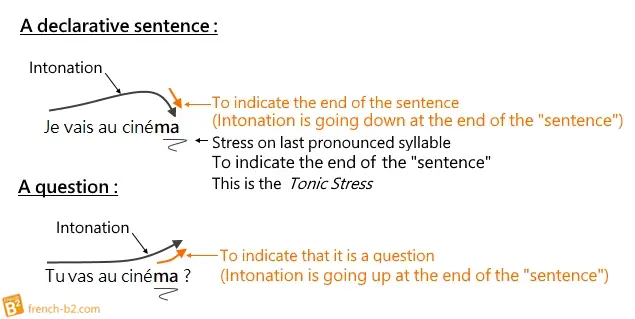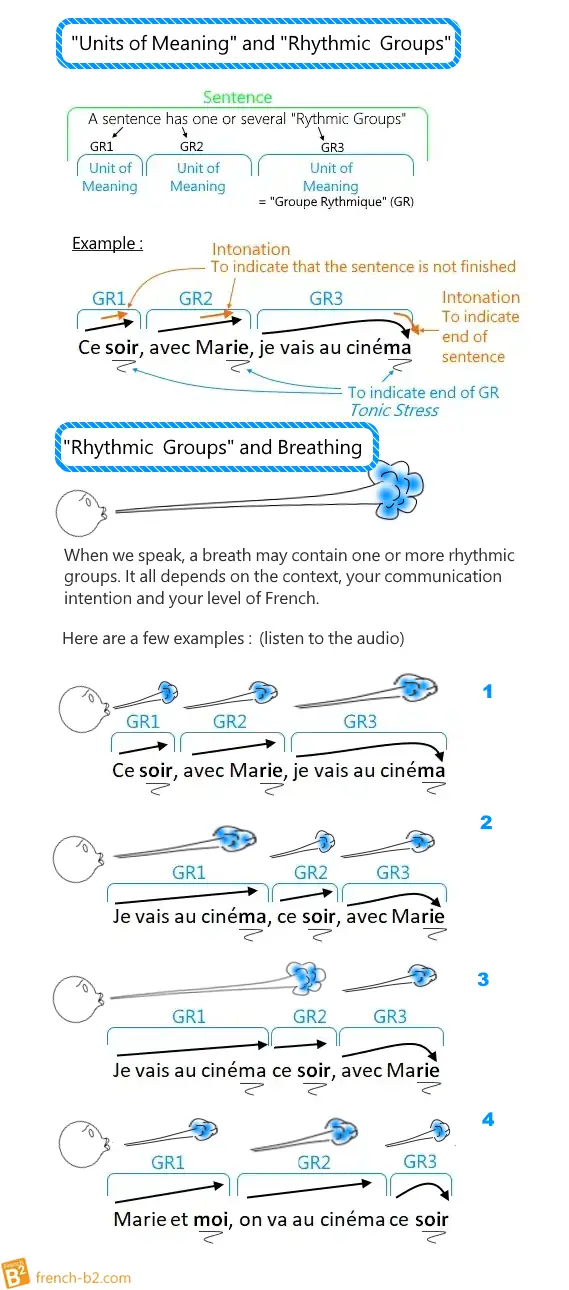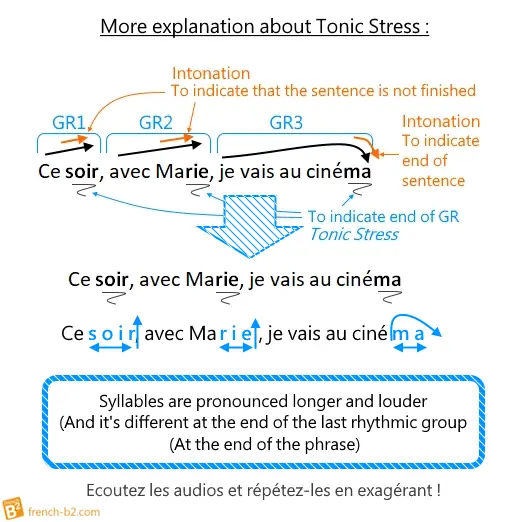Use Rhythmic groups, Intonation and Tonic Stress in French
To enrich your communication, to be confident

The use of rhythmic groups when pronouncing sentences has two main goals :
- To help your interlocutor to decode your message (= Kind of rules)
- To give the desired meaning to your message (Depends on the Speaker)
Find below some tips on How to Pronounce french sentences (With examples and Audios)
2/ Rhythmic Groups as Units of Meaning
Because a sentence can contain a lot of information, to help your interlocutor, the information is divided into « Units of meaning ». (Note : « Unit of Meaning » = « Rhythmic Groups » = « Groupes Rythmiques » = GR )
The game is to help your interlocutor to catch Units of Meanings (= Rhythmic Groups), and for that, he must be able to :
- to identify the beginning and end of the « Units of Meanings » (GR)
- to know if it is a question, a declarative information, …
- to identify the end of the sentence (End of last « Units of Meanings »)
In the previous topic, Tonic Stress was in reality to indicate the end of the « Rhythmic Group ». In the examples below, look at Intonation, End of « Rhythmic Groups » and End of sentences. (For simplification, these examples have no questions)
Intonation and Tonic Stress follow simple rules :
- To indicate the end of GR : Stress on the last pronounced syllable (called : Tonic Stress)
- To indicate that another GR follows : the intonation of GR does not decrease at the end of GR
- To indicate the end of the sentence (No GR follows) : the intonation decreases at the end of the last GR
- If you are a beginner, start like in #1, #2, and #4, and slice your sentence. It is the first step in managing intonation and stress.
When ready do like in #3 and put several Rhythmic Groups (Units of meaning) in the same breath, still in control of intonation and stress.
Listen to audio :
These 4 sentences are simple school cases to explain the concept and there are commas between the « Rhythmic Groups » and connectors.
In a real conversation, when you speak, there is no written comma and you decide how to divide your message into rhythmic groups (Groups of meaning).
In fact, a breath includes one or more rhythmic groups, and a breath with a single rhythmic group is easier to pronounce, and it’s easier to manage the intonation and accentuation you want. Adapt the number of rhythmic groups per breath according to your level and the level of your interlocutor, taking into account the context of the conversation..
3/ Expressive and Emphasis Stress
Intonation and Tonic Stress help your interlocutor to get Units of Meaning (Rhythmic Groups).
The next step is to enrich Units of Meaning, to give a feeling, or emotions, to enrich your message with Expressive Stress / Emphasis Stress :
- Emphasis Stress is used to insist, to increase the meaning of a word …
- Expressive Stress is used to express feelings or emotions
Emphasis and Expressive stress are a combination of stronger and longer pronunciation of one or several syllables (Strenght and length depend on your communication intention). Example: C’est très bien ! C’est trèès bien !
Emphasis Stress
To insist, to increase the meaning of a word : 3 examples
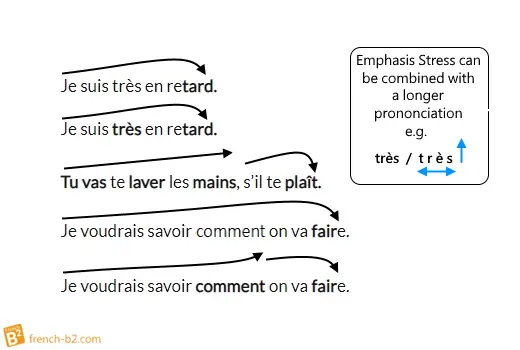
Expressive Stress
To express feelings or emotions : 3 examples :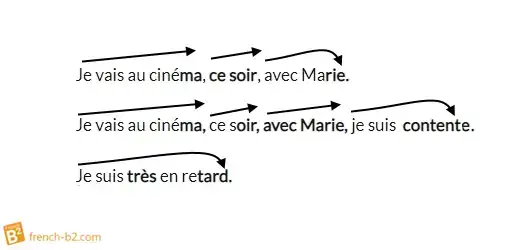
Listen to audio.
The speaker wants to emphasize a word, an expression such as : Très, avec Marie, ce soir, contente. This is to enrich your message and grammar doesn’t decide anything here, you decide your message, how you want to put it, what you want to say.
Another example :
- You are afraid (neutral) : « J’ai peur »
- You are afraid (with a feeling) : « J’ai peur » +, » J’ai très peur « ++
To wrap up!
To be at ease in French
_ Understand the importance of rhythmic blocks and accentuation.
_ Practice intonation and accentuation as much as possible and as early as possible.
And you’ll feel more at ease speaking, enriching your messages and improving your listening skills.
Work differently to make a difference !
If you have an audio document with a transcript, start by analyzing the text of the audio and imagining how the person might express his or her message (also take into account punctuation and connectors). Then, after listening to the dialogue, express the same text in your own way and at your own level (with your rhythmic blocks).
The more beginners you are, the more rhythmic blocks you’ll have.
The more rhythmic blocks you have, the easier it is to use intonation and accentuation.
Don’t be afraid to exaggerate and dramatize.




